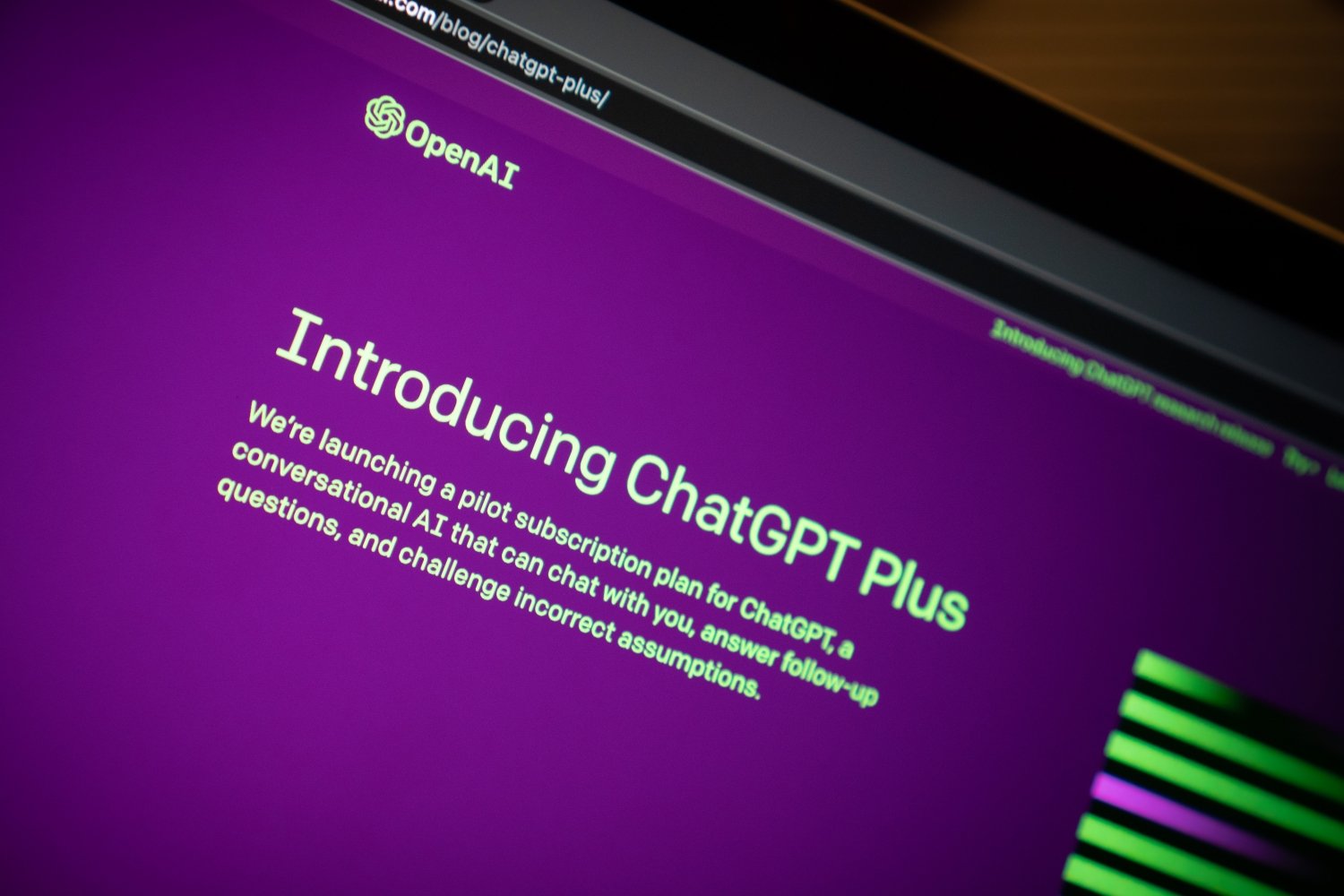How to Get Next-Generation Business Intelligence with Contextual AI
by Aware
Large language generative AI is holding you back. Contextual AI delivers the results that innovative businesses need to thrive in the future of work.
What role does artificial intelligence (AI) play in the modern workplace? The incredible popularity of ChatGPT has unleashed a new world of possibilities. Although we think there are good reasons why leaders should think twice about ChatGPT before blindly deploying it across the enterprise, there are incredible benefits to be gained from using the right kind of AI to augment processes across the workplace.

What is generative AI?
Generative AI is the type of artificial intelligence that has attracted the most attention in recent months. It works by ingesting large amounts of data and rearranging those inputs to create novel outputs. ChatGPT is a chatbot built on generative AI technology. DALL-E is an image-based generative AI model.
Both these models, and others like them, have claimed to be able to disrupt the ways that we create new content. But generative AI produces information, not knowledge. It can never create something entirely new. And that’s a problem for the people who rely on it for creative tasks.
However we use generative AI, it’s critical to remember that the data it ingests and outputs is all human-made. In the case of ChatGPT, for instance, it has been fed with content from the internet — news articles, academic studies, educational material, literary works, blogs, and social media posts. GPT-3, the large language model that formed the basis of ChatGPT, was trained on over 45 terabytes of data. AI stands on the shoulders of centuries of human knowledge, creation, and innovation.

3 Dangers of Overreliance on Generative AI in the Workplace
To provide value, AI should take an action or solve a problem. Otherwise, it’s just a distraction. Generative AI has been heralded as the answer to everything from writing emails and blog posts to creating code and producing business analysis reports. But can it really do any of that — and can it do it well?
Beyond ChatGPT’s acknowledged issues with accuracy, bias, and relevancy — it knows very little about the world beyond 2021, for example — AI that regurgitates human intelligence can be incredibly detrimental if humans begin to rely on it as a source of knowledge. Here’s three dangers of AI overreliance that we’re barely beginning to understand.
Danger 1: Generative AI stops critical thinking
As humans, we trust computer outputs. We don’t doubt a calculator got an equation right. That blind faith makes sense for simple processes, but it’s vital that we re-learn how to question what the machines are telling us. Otherwise your employees risk producing erroneous, obsolete, or simply bad information that can harm your brand by failing to think critically about the outputs that chatbots deliver.
A chatbot within a call center could reduce the time spent training new employees by providing a talk track for them to speak to customers, but your people still need to use their best judgment about the information they provide.
Danger 2: Generative AI overlooks true human innovation
Generative AI is built on past knowledge. It can’t make real-time adjustments the way that people can. ChatGPT and similar large language models lack the human cognitive ability to understand large numbers of complex variables that adapt over time. Even the best AI forecasting models rely on pattern recognition to produce outputs and struggle to adapt to novel situations.
If your people rely on ChatGPT or other generative AI tools to do their work for them, they’re omitting their own nuanced understanding of your workplace — everything from company voice and tone to how you understand your customers and function as an organization. A chatbot might be able to write a basic blog or webpage, but it can’t tell you who to target or how to refine your messaging for your company’s audience.
Danger 3: Generative AI undermines the human dataset it relies on
AI large language models need a steady input of new human knowledge in order to remain relevant. If we make the mistake of thinking of the AI as a source of knowledge in its own right, we stop adding new layers of human innovation that no chatbot can recreate. As a result, we stop learning and stop evolving.
Imagine if everything your business knew now was all it would ever know. Everything from go to market strategies to sales talk tracks to product development. How long could the brand remain relevant? If even one department begins to over rely on AI to support their business functions, the company immediately begins to fall behind.

What is contextual AI?
None of this means that AI has no place within the modern workplace. Generative AI can make it faster and easier for businesses to access and use data, but only when the models are trained on the right data for limited use cases. For example, generative AI models could be used to quickly extract patterns from sales statistics and make recommendations on the best times to approach new contacts.
One of the mistakes organizations make when rolling out AI adoption is asking generative AI to solve all the problems and needs of modern businesses, when it isn’t the only (or best) form of artificial intelligence available. A far more powerful solution, with multiple business applications, is contextual AI.
Contextual AI models are designed to analyze data in the context of the situation or environment in which it was generated, rather than looking at the data in isolation. By considering context, these AI models can better understand the meaning and significance of the data, leading to more accurate predictions and insights.
Aware’s contextual intelligence platform uses proprietary, industry-leading natural language processing (NLP) to extract insights from employee voices at scale. Using popular workplace collaboration tools like Slack, Microsoft Teams, and Zoom, businesses can visualize every aspect of how their organizations run. And with Aware’s recently announced Context API, organizations can now access even more contextual intelligence from almost any social media or collaboration data source to inform faster decision-making with greater certainty.
Join the Context API waitlist now
3 Benefits of Contextual AI in the Workplace
Here’s three ways that innovative businesses are using contextual AI from the Aware intelligence platform to become better versions of themselves.
Benefit 1: Contextual AI optimizes business processes
By analyzing aggregate data from employee voices at scale, businesses gain a holistic overview of how the business functions — and where it fails to perform. Instantly spot where cumbersome processes create frustration and hamper productivity. Understand if failures in equipment or supply lines are isolated incidents or systemic problems. Understand how information is disseminated through the enterprise, make adjustments on the fly, and surface challenges and roadblocks in real time.
Benefit 2: Contextual AI elevates the voice of the employee
The people on the front lines of your business know your product and customer best, but their voice is rarely heard in the room where decisions are made. Using contextual AI from Aware, companies can elevate that voice to inform more impactful decision making, reduce turnover, and proactively protect their culture from negative and toxic elements.
Benefit 3: Contextual AI drives top-line growth
What could you do with an enhanced, continuous understanding of how your business runs — where to optimize, when to act, how to message, and what your people want? Contextual AI provides a real-time stream of insights from the breakroom to the boardroom, uniting the ultimate source of knowledge about your business with the people charged with directing its future.

Get the insights: 4 stories of successful leaders using AI to transform their organizations
Final Thoughts
Artificial intelligence is the new frontier of business innovation, but not all AI is created equal. Understanding how AI works, and choosing the right models for your business needs, is critical to getting it right. But even the best AI cannot replace human intelligence. At Aware, we combine groundbreaking contextual AI with human insights from employee voices at scale to accelerate the ways innovative companies do business.
Download our free e-book on Thriving in the Future of Work to explore even more ways that AI-infused employee listening insights are transforming the way major brands do business.








